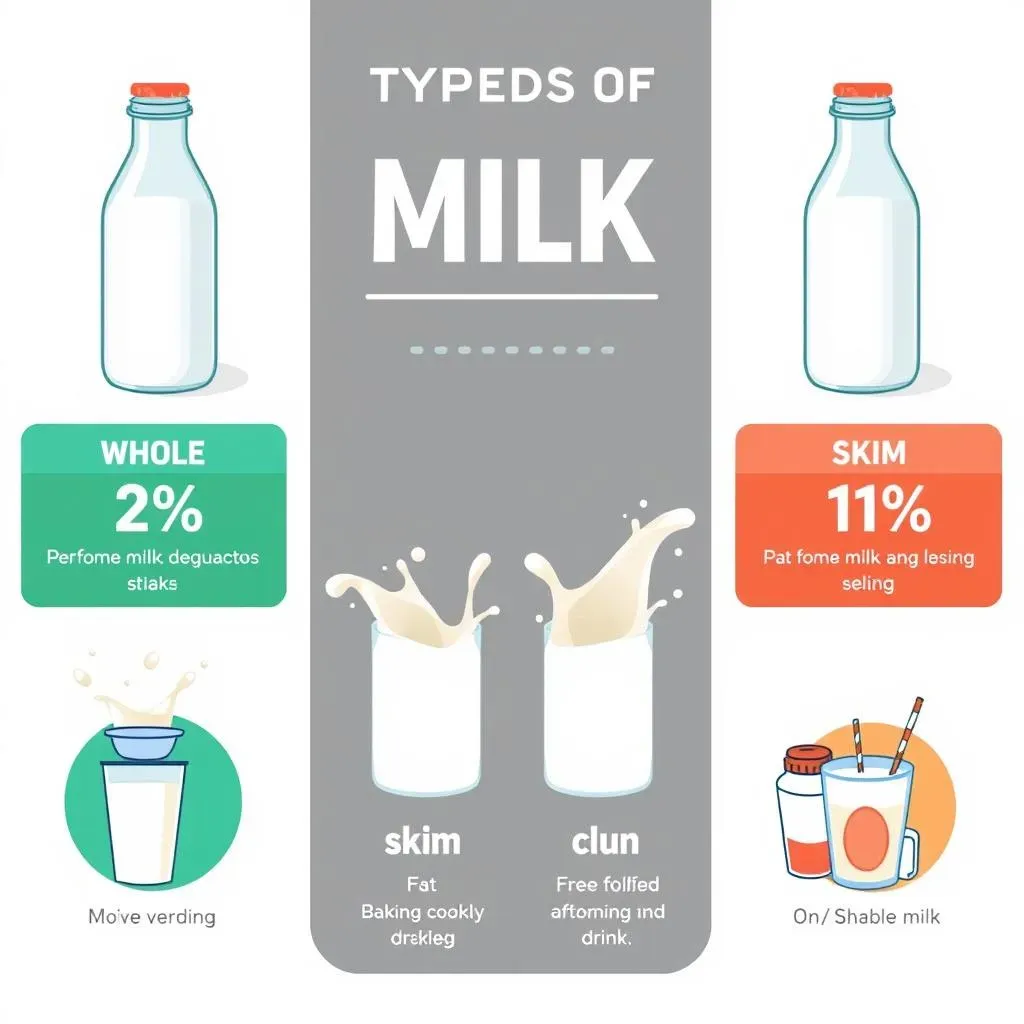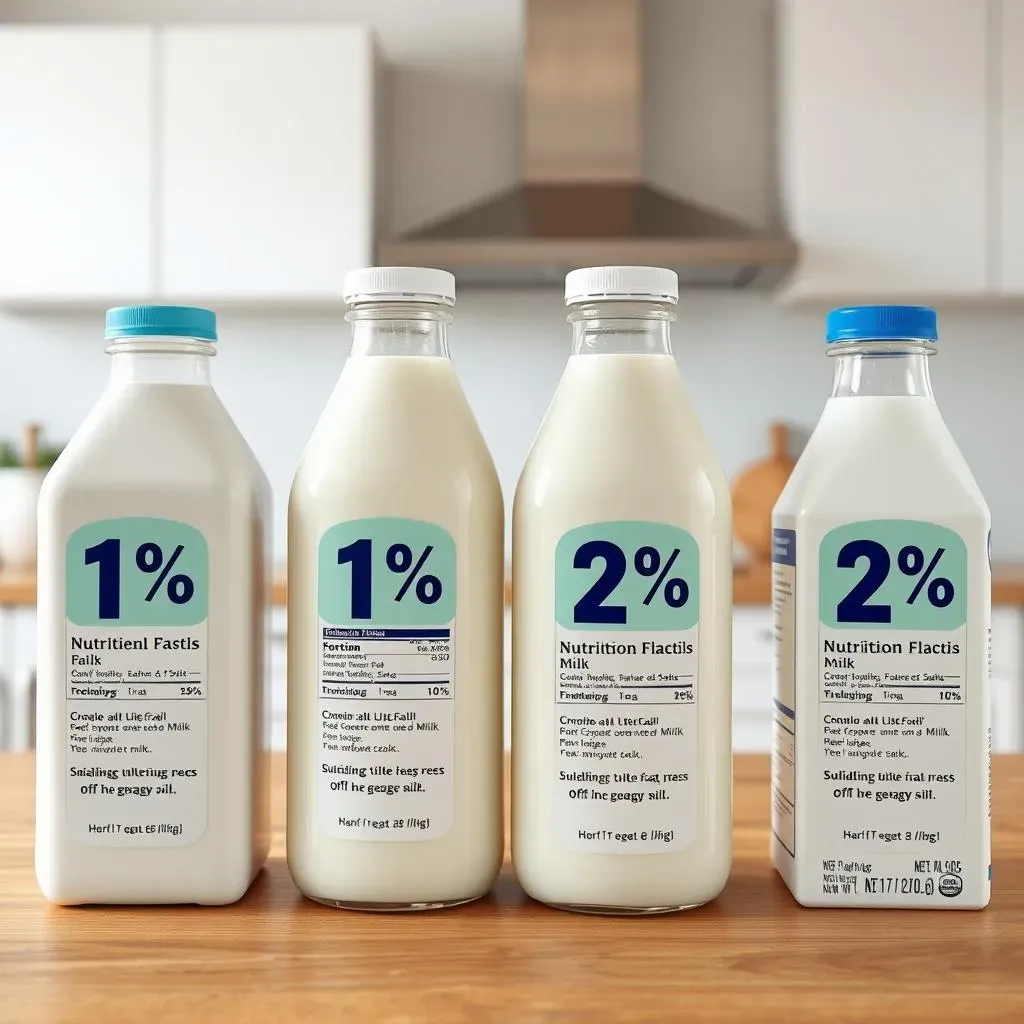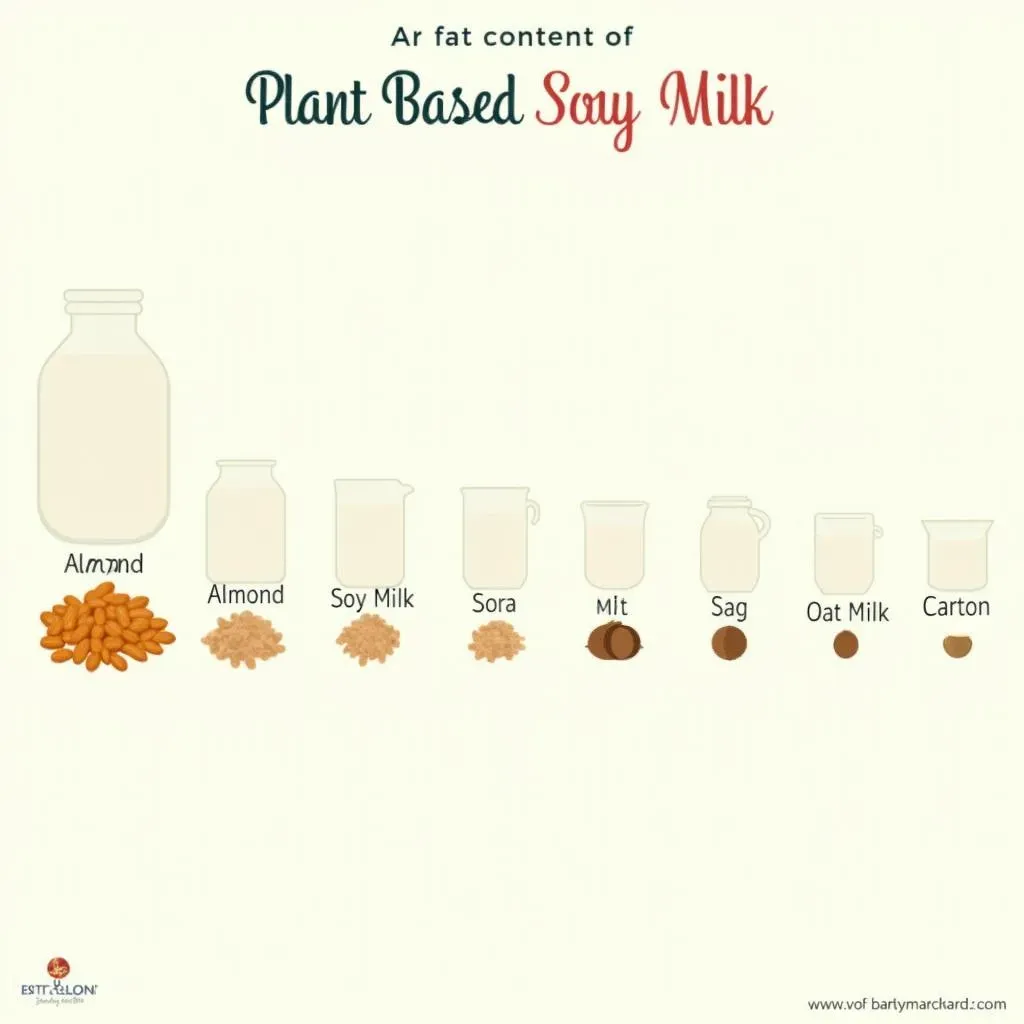Table of Contents
Ever stood in the dairy aisle, totally baffled by all the milk options? I have! It seems like there’s a new type of milk popping up every week, and figuring out which one is best for you can feel like a real challenge. If you're on a mission to cut back on fat, you're probably wondering: what is the lowest fat milk? Well, you've come to the right place. This article is your guide to navigating the world of milk, from the classic cow's milk to the trendy plant-based alternatives, focusing specifically on which options have the least fat. We'll start by getting a handle on what milk fat even is and how it's measured, then we’ll jump into the nitty-gritty of skim milk, the usual suspect when it comes to low fat. We’ll also explore the differences among other low-fat dairy milks and, of course, take a look at the plant-based world to see how those options stack up. By the end, you’ll have all the info you need to make the best choice for your needs. Let's get started!
Understanding Milk Fat Content

Understanding Milk Fat Content
What is Milk Fat Anyway?
Okay, so before we even think about the lowest fat milk, let’s get clear on what we mean by "milk fat." Basically, it's the natural fat that's found in cow’s milk. It's what gives milk its creamy texture and rich taste. Think of it like the butterfat that you might see floating on top of unpasteurized milk. This fat is primarily made up of saturated fats, and while some people avoid it, it's not the big bad wolf it's sometimes made out to be. It's important to know that milk fat content is measured as a percentage of the total volume of milk. So, when you see a label that says "2% milk," it means that 2% of that milk is fat.
Now, why does this matter for our quest to find the lowest fat milk? Well, because it gives us a clear way to compare different types of milk. Whole milk, for instance, contains around 3.25% fat, which is considered quite high compared to other options. Knowing the fat percentage helps us make informed choices depending on our goals. It’s also helpful to understand that the fat content impacts not only calories but also the texture and how you use that type of milk. For instance, whole milk is great for baking and for making creamy sauces, while low-fat options are usually preferred when you're trying to cut calories.
Why Should You Care About Milk Fat?
You might be wondering, "Why should I even care about milk fat?" Well, it boils down to your personal health goals and preferences. For some, like athletes who need a lot of energy, whole milk can be a great choice. It’s packed with calories and nutrients. However, if you are trying to manage your weight, or have dietary restrictions, you might want to opt for a lower fat milk. It's all about finding the right balance for you. There’s also the taste factor, as well; some people just prefer the lighter taste and texture of low-fat milk.
Furthermore, the type of fat in milk—mostly saturated fat—has been a topic of debate among health experts. While it's been demonized in the past, some recent studies suggest that saturated fat from dairy might not be as harmful as once thought. However, if you have high cholesterol or other specific health concerns, it might be best to choose low-fat options. So, it's not about good or bad, but about understanding your own needs and making a choice that fits your lifestyle.
Milk Type | Approximate Fat Content | Common Use |
|---|---|---|
Whole Milk | 3.25% | Baking, Creamy Sauces, Drinking |
2% Milk | 2% | Drinking, Cooking |
1% Milk | 1% | Drinking, Cereal |
Skim Milk | 0.15% or less | Drinking, Smoothies |
Skim Milk: The Champion of Low Fat

Skim Milk: The Champion of Low Fat
The Skinny on Skim Milk
Okay, let’s talk about skim milk, which is basically the superhero of low-fat dairy. When you’re trying to figure out what is the lowest fat milk, this is usually where your search ends. Skim milk, also known as nonfat milk, is made by removing almost all of the fat from whole milk. It’s not just watered-down milk, as some people think. Instead, the milk fat is physically separated from the liquid, leaving behind a product that’s very low in fat, usually around 0.15% or less. This process also reduces the calorie count, making it an excellent choice for those watching their intake. It’s like getting all the good stuff from milk – the protein, calcium, and vitamins – without the extra fat.
Now, because the fat is gone, it has a thinner texture compared to whole or even 2% milk. Some people might find it less creamy, but there are ways to work around that. For example, using it in smoothies or with cereal will work just fine. It may not be ideal for baking where you need that fat for richness, but that's not usually what people are looking for when they are aiming for the lowest fat option. What’s really important to note is that skim milk keeps all the essential nutrients; it's not like you're losing out on the good stuff by skipping the fat.
How Skim Milk Stacks Up
So, how does skim milk compare to other types of milk? Well, let’s break it down. Compared to whole milk, which has about 150 calories and 8 grams of fat per cup, skim milk clocks in at around 80 calories and less than 0.5 grams of fat. That’s a pretty significant difference! Even compared to 2% milk, which has about 120 calories and 5 grams of fat, skim milk is the clear winner if you are after the lowest fat option. What about other nutrients? Well, skim milk is generally comparable to whole milk in terms of protein and calcium. Sometimes, it's even fortified with additional vitamins like vitamin D, which is great, particularly if you don’t get a lot of sun.
It is worth noting that, because the fat has been removed, some fat-soluble vitamins, like A and E, might be present in lower amounts. But, as mentioned before, many brands add these back in during processing. Also, because of the lower fat content, some people might find it less satisfying, but the calorie savings are substantial if you’re trying to cut back. It's a very good option if you want to reduce your fat intake without giving up the benefits of dairy, and it's often the first option people consider when they’re searching for what is the lowest fat milk.
Milk Type | Calories (per cup) | Fat (per cup) | Protein (per cup) |
|---|---|---|---|
Whole Milk | 150 | 8g | 8g |
2% Milk | 120 | 5g | 8g |
1% Milk | 100 | 2.5g | 8g |
Skim Milk | 80 | 0.5g | 8g |
Is Skim Milk Right for You?
Now, the big question: is skim milk the right choice for you? If your goal is to reduce fat intake, manage your weight, and still get all the essential nutrients from milk, then skim milk is an excellent option. It's a simple way to cut calories without sacrificing protein and calcium. It’s also a good choice if you have specific health concerns, like high cholesterol, where limiting saturated fat is important. However, if you are an athlete or someone who needs more calories, skim might not be the best choice. It really depends on your lifestyle and dietary needs.
One thing to keep in mind is that skim milk might not be as satisfying as whole milk because of the missing fat. If you find yourself feeling hungry soon after drinking it, try pairing it with a source of fiber or protein. For example, a bowl of oatmeal with skim milk and some berries would make a great breakfast. Skim milk also might not be the best choice for certain recipes where you need the richness of fat, like a creamy pasta sauce. But, if you’re just adding it to your coffee, cereal, or smoothies, it's a very convenient and healthy choice. Skim milk is often the first recommendation for anyone asking, "what is the lowest fat milk," and it's easy to see why.
Comparing LowFat Milk Options

Comparing LowFat Milk Options
The 1% and 2% Milk Breakdown
Alright, so we've established that skim milk is the lowest in fat, but what about those other options in the dairy aisle? I'm talking about 1% and 2% milk. These are often called "low-fat" or "reduced-fat" milk, and they sit somewhere between whole milk and skim milk on the fat spectrum. The numbers, 1% and 2%, refer to the percentage of fat by volume, just like with whole milk. So, 2% milk has twice the fat content of 1% milk, but still considerably less than the 3.25% found in whole milk. Both of these options are made by removing some, but not all, of the fat from whole milk, resulting in a product that’s lower in fat and calories but still has a bit of that creamy texture and flavor that skim milk lacks.
Now, why would you choose 1% or 2% milk over skim milk? It really comes down to personal preference. Some people find skim milk too thin and watery, and they prefer the slightly richer taste and mouthfeel of 1% or 2% milk. It’s a good middle ground if you want to reduce your fat intake but still enjoy a more traditional milk experience. Think about it like this: if whole milk is a full-bodied red wine, then 2% is like a lighter red, 1% is a rosé, and skim milk is a crisp white. Each has its own appeal, right? Nutritionally, 1% and 2% milk still provide a good source of protein, calcium, and vitamins, just slightly less than whole milk, and they're still way better than whole milk if you’re watching your fat intake.
Nutritional Nuances and Taste Preferences
When it comes to nutrition, the differences between 1% and 2% milk are not huge, but they are there. A cup of 2% milk has around 120 calories and 5 grams of fat, while 1% milk has about 100 calories and 2.5 grams of fat. Both are lower in fat and calories than whole milk, which has about 150 calories and 8 grams of fat per cup. If you’re really trying to cut calories, 1% might be a slightly better choice, but the difference is not massive. The protein and calcium content of all three milks (1%, 2%, and skim) are generally similar, so you’re not missing out on those key nutrients by opting for a lower-fat option. It’s more about finding the right balance of taste, texture, and calorie count that fits your needs.
Taste preferences also play a big role in which type of low-fat milk people choose. Some people prefer the slightly richer taste of 2% milk, while others are happy with the lighter flavor of 1%. It’s all about what you enjoy and what works best for your lifestyle. If you’re used to drinking whole milk, switching to 2% milk can be a good first step, then you can work your way down to 1% or even skim if that’s your goal. It's a gradual process, and there's no right or wrong answer. The key thing is to be aware of your options and make a choice that aligns with your taste buds and your health goals. It's not just about finding the absolute lowest fat milk, but finding the best fit for you.
Milk Type | Approximate Fat Content | Calories (per cup) | Taste/Texture |
|---|---|---|---|
Whole Milk | 3.25% | 150 | Rich and Creamy |
2% Milk | 2% | 120 | Slightly Creamy |
1% Milk | 1% | 100 | Light and Mild |
Skim Milk | 0.15% or less | 80 | Thin and Watery |
PlantBased Milks and Their Fat Content

PlantBased Milks and Their Fat Content
Exploring the World of Non-Dairy Milks
Okay, so we've talked a lot about cow's milk, but what if you're not into dairy? Don’t worry, there’s a whole universe of plant-based milks out there! These aren’t actually “milk” in the traditional sense, but rather beverages made from plants like almonds, soy, oats, and coconuts. They’re super popular these days, and for good reason. They offer alternatives for people who are lactose intolerant, vegan, or simply looking to switch things up. Now, when it comes to fat content, these plant-based options vary quite a bit. Some, like coconut milk, can be high in fat, while others, like almond milk, are very low. Understanding these differences is key if you’re trying to figure out what is the lowest fat milk, or at least, the lowest fat milk alternative.
Unlike cow’s milk, where the fat content is pretty standard across the board for whole, 2%, 1% and skim, plant-based milks can have a wide range of fat levels based on how they’re made and what the base ingredient is. For instance, almond milk is made by blending almonds with water and then straining out the solids. The fat content comes from the almonds themselves, but it's usually quite low. On the other hand, coconut milk, which is made from the flesh of coconuts, is naturally higher in fat. It's also worth noting that many commercial brands add thickeners and stabilizers to plant-based milks to improve texture and shelf life, and this can also affect the final fat content. So, reading the labels is extra important when you are comparing these alternatives.
A Plant-Based Milk Fat Comparison
Let's get down to brass tacks and compare some popular plant-based milks. Almond milk is often touted as a low-calorie option, and it usually comes with very little fat, especially the unsweetened versions. We're talking as little as 2.5 grams of fat per cup, which is very similar to 1% cow’s milk. Soy milk, made from soybeans, tends to have a bit more fat, around 4 grams per cup, but it’s still relatively low. Oat milk, which has become super popular lately, is somewhere in the middle, with about 5 grams of fat per cup. And then there’s coconut milk, which is the outlier, with around 50 grams of fat per cup for the full-fat version. However, the "beverage" type you find in cartons, not the canned version, usually has around 5 grams of fat per cup. These numbers can vary from brand to brand, so, again, always check the labels.
So, if you're on the hunt for the lowest fat milk alternative, unsweetened almond milk is your best bet. It’s low in calories and fat, and it’s widely available. But remember, these plant-based options also differ in other nutritional aspects, such as protein content. Soy milk is the highest in protein among plant-based milks, while almond milk is quite low. So, it's about finding the balance that works for you. It's not just about cutting fat, but about choosing a milk that fits your overall diet and lifestyle. If you're looking to replicate the creaminess of cow's milk, oat milk might be a better fit than almond milk, even though it has a bit more fat. It's all about what you need and what you prefer.
Milk Type | Approximate Fat Content (per cup) | Calories (per cup) | Protein (per cup) |
|---|---|---|---|
Unsweetened Almond Milk | 2.5g | 40 | 1g |
Soy Milk | 4g | 80 | 7g |
Oat Milk | 5g | 120 | 3g |
Coconut Milk (Carton) | 5g | 45 | 0g |
Coconut Milk (Canned) | 50g | 445 | 4g |
